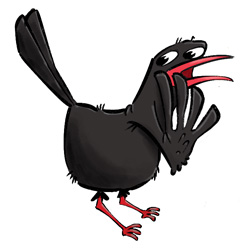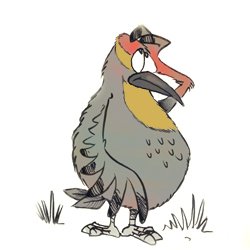If you ask an Artificial Intellegence what are the best birding websites in the world… all the answers will be American websites… why? Because AIs are mostly based in the US and the world wide web is massively biased toward the US and US stuff. But, if you’re looking for the best bird watching websites with a global perspective and without bias towards the United States, there are a few great options to consider.
BirdLife International: This organisations website provides comprehensive information on bird species and conservation efforts around the world. You can search for birds by country or species, and the site also includes news updates and educational resources. It says of itself: Our Mission is to conserve birds, their habitats and global biodiversity, working with people toward sustainability in the use of natural resources. If BirdLife International didn’t exist, you’d have to invent us. People are destroying and consuming nature at a devastating rate. Birds are our early warning system.
eBird: Managed by the the US Cornell Lab of Ornithology, eBird is a platform where birders from all over the world can report their sightings and contribute to a global database of bird distribution and abundance. The site provides real-time information on bird sightings, as well as tools for analysing data and creating custom maps. It says of itself: eBird began with a simple idea—that every birdwatcher has unique knowledge and experience. Our goal is to gather this information in the form of checklists of birds, archive it, and freely share it to power new data-driven approaches to science, conservation and education. At the same time, we develop tools that make birding more rewarding. From being able to manage lists, photos and audio recordings, to seeing real-time maps of species distribution, to alerts that let you know when species have been seen, we strive to provide the most current and useful information to the birding community.
Fatbirder: A UK-based, comprehensive directory of birding websites and resources, Fatbirder provides links to birding organisations, trip reports, and other useful information for birders around the world. The site is organised by country and region, making it easy to find information on birding destinations EVERYWHERE. It says of itself: Fatbirder is the premier birders’ web resource about birds, birding and birdwatching. Whether you are looking for facts about hummingbirds, songbirds, shorebirds or raptors in your backyard or are planning a trip or birding tour anywhere in the world Fatbirder is the site for you.
Avibase: Managed by Canada’s premier birding organisation, this database provides information on bird species and their distribution around the world. You can search by species or location, and the site also includes photos and audio recordings of many bird species. Avibase is a great resource for birders looking to learn more about the birds they are likely to encounter in different parts of the world. It says of itself: Avibase is an extensive database information system about all birds of the world, containing over 59 million records about 10,000 species and 22,000 subspecies of birds, including distribution information for 20,000 regions, taxonomy, synonyms in several languages and more.
BirdGuides: This UK-based website offers bird identification tools for birders in Europe and other parts of the world. It features a database of over 900 species, with photos, descriptions, and range maps. It also offers a sightings service but the current version is behind a pay wall.
Bird Forum: Created by a UK birder, this is an enormous resource because there are hundreds of participating birders across the world ready to contribute and answer other birder’s questions. Not always the gentlest of critics, but that doesn’t detract from its wealth of information. It says of itself: BirdForum, the internet’s largest birding community with thousands of members from all over the world. The forums are dedicated to wild birds, birding, binoculars and equipment and all that goes with it.
Birding Pal: Created by a Danish birder, this site connects birders with local guides in countries around the world. You can search for guides by country or region and read reviews from other birders who have used their services. The site also includes information on birding hotspots and species found in each area. It says of itself: Bird Watching Club for World Travellers Travel globally, bird locally. Meet local Birding Pals at their favourite birdwatching hotspots.
Cloud Birders: Based in Europe and run by a number of different nationals, it is one of the two best birding trip report sources on the net (the other being Fatbirder). This is constantly updated with the latest reports by commercial birding tour companies AND ordinary travelling birders. Over 21,500 reports to choose from!







